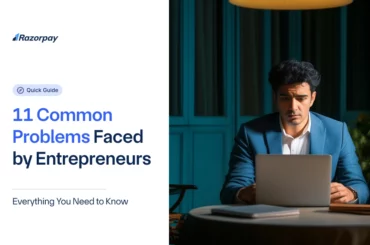Providing monetary support to startups and new ventures comes with a price. For higher growth opportunities, the possibilities are endless; at the same time, it’s risky business, too. Regardless of the difficulties, there are many Venture Capital (VC) firms that provide the necessary push to new ventures.
For example, Y Combinator, Sequoia, Tiger Global Management and Matrix Partners, to name a few.
VC firms aim to invest in high-risk projects with the anticipation of high returns, and the funds provided by them is called venture capital.
What are Venture Capital funds?
According to the Securities and Exchange Board of India (SEBI), Venture Capital Funds (VCF) is a stock of money established in the form of a trust or company registered with SEBI.
The VCF will have a dedicated pool of capital, raised in a specified manner and invested by following regulations of SEBI.
A pool of money stocked together from different investors that a fund manager invests into selected startups is called VC funds.
An ideal VC organization manages about $100 to $200 million in venture capital every year for its investors. The fund gets divided between many startups, but in some cases, the money is pumped into a single company.
[Suggested reading: Startup Funding in India]
Who invests in Venture Capital funds?
Most of the capital that a VC firm invests comes from Limited Partner investors or LPs, who are high net worth individuals and institutional investors.
The nature of LP investors can vary widely, but the bulk of the capital in the VC ecosystem comes from large institutions or Institutional investors.
Institutional investors: Large institutions like endowment and pension funds, hospitals, charitable trusts, and corporations, who invest their capital to achieve a certain percentage of interest
Whereas, a modest portion of the overall capital in the VC ecosystem comes from high net worth individuals.
High net worth individuals: They are people with a net worth of over $2 million in liquid assets who invest their wealth.
Who manages Venture Capital funds?
VC firms employ competent managers who are responsible for running the funds invested by LPs (high net worth individuals or institutional investors).
The fund managers or general partners are responsible for investing the wealth in profitable startups, which guarantee a favorable ROI and maximize returns for the LPs.
Other responsibilities of the general partners:
- Raise funds from LPs
- Source innovative startups
- Invest funds in promising startups
- Deliver ROI to LPs
How do Venture Capitals get paid?
A typical VC investment expects a 20% return on investment.
Because mustering meteoric returns rely heavily on strategic investments. Therefore the assumption is based on assessing the performance of the fund managers and analyzing the risk levels.
And, a ten year VC funding would require startups to pay six times of the investor’s investment. The VC firm’s winner investments need to make 30x returns to provide the VC fund with a 20% compound return, to generate maximum ROI.
Here’s an interesting fact: Traditional VC funds are usually LPs, so, this means the fund managers only get to invest the money once.
For instance, if a fund manager makes an investment and exits after a 6x return, he/she is obliged to return the principal and gains to the LPs.
After this, the fund manager can no longer reinvest the money.
[Also read: 5 Steps to Pitch to a Venture Capital]
Startup fundraising: from seed to Series C and the road ahead
Startups raise venture capital in phases, which is generally referred to as rounds.
Fundraising rounds attribute to the essential issuances of venture capital. For example, when investors get a pool of funds together and invest in the startup in one or more increments is known as tranches. Often tied to a valuation event, each fundraising round is correlated in a startup’s development.
Benchmarks at every funding rounds
| Seed stage |
|
| Series A |
|
| Series B |
|
| Series C and beyond |
|
Conclusion
In VC funding, startups can raise money that they are under no obligation to repay. However, the cost of accepting the funds is higher–investors can buy a percentage of the company from the founders.
VC funding is the ultimate financing structure for the startups that need cash to run their engine and will spend more time in the red to build a profitable business.
Read next: A Beginners Guide to VCs





